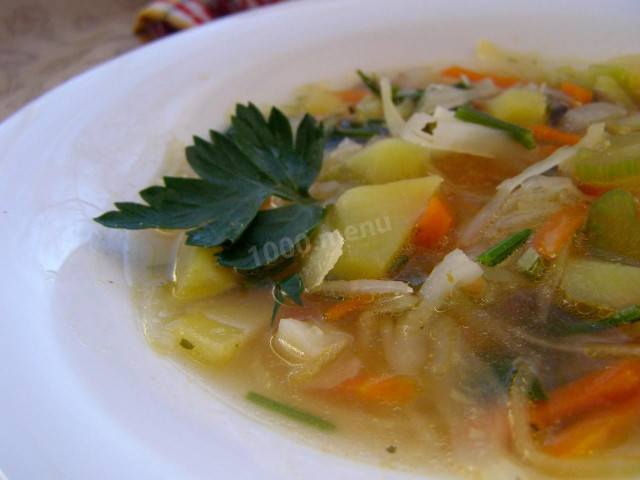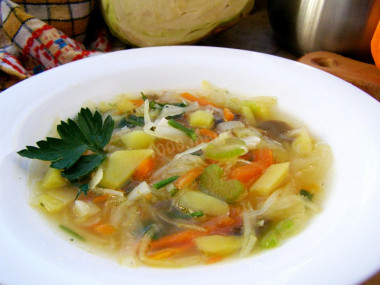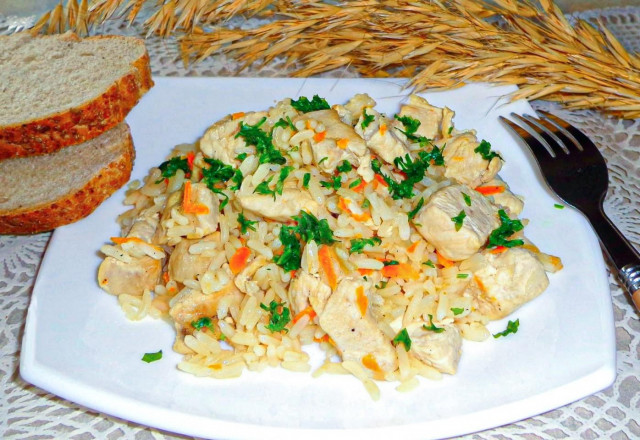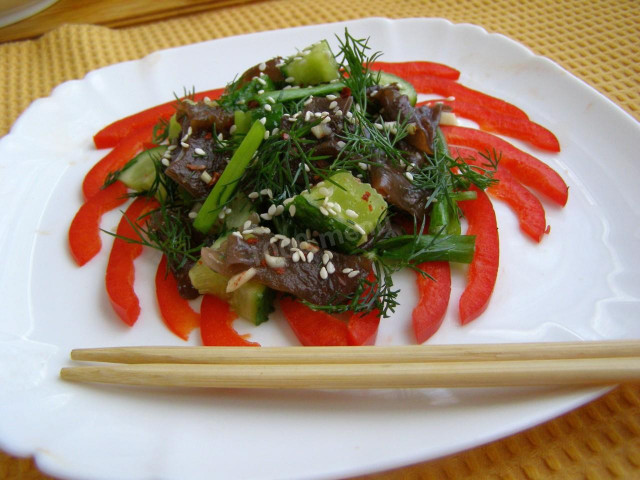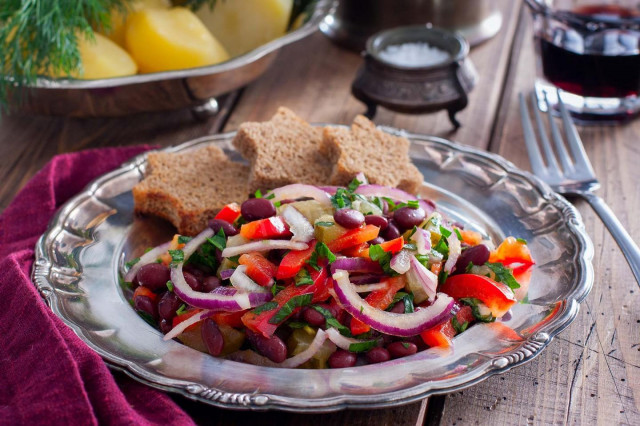Composition / ingredients
Step-by-step cooking
Step 1:
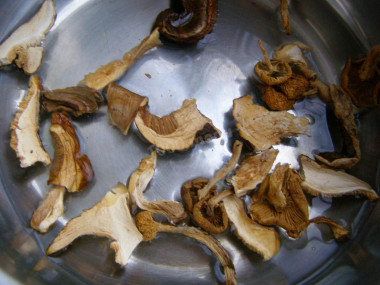
Let's start cooking soup with mushrooms. Soak the dried mushrooms in water. Let them stand for half an hour, and then they should be boiled in a small amount of water. In the case of the meat version, broth is cooked.
Step 2:
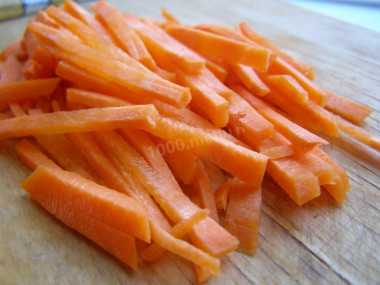
And during this time we will prepare everything else. First, put the second saucepan of water on the gas, and then peel the carrot, rinse and set up with a pretty straw.
Step 3:
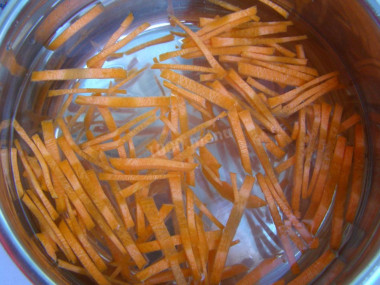
At this stage, you can start the usual procedure of cooking frying, i.e. frying vegetables in oil in a frying pan for 4-5 minutes. But the main feature of the Russian first course is the laying of components without roasting and passivation. So let's send the carrot not into a frying pan, but into a saucepan with boiling water.
Step 4:
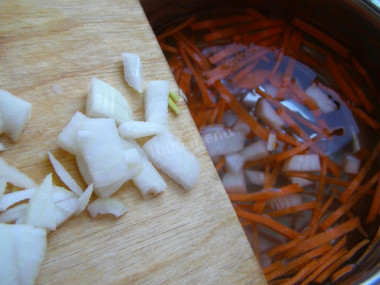
Peel the onion, rinse it under the tap and cover with a small cube. We will immediately send him to the carrot.
Step 5:
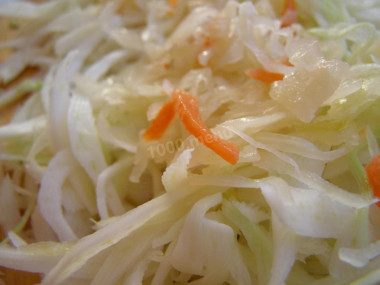
I took the cabbage fresh, chopped into thin strips, and sauerkraut. All this must first be put in a small amount of water (you can take it from the saucepan where the mushrooms are cooked).
Step 6:

While the cabbage is stewing, peel the potatoes and cut into strips or cubes. We'll send her to the onion and carrot.
Step 7:
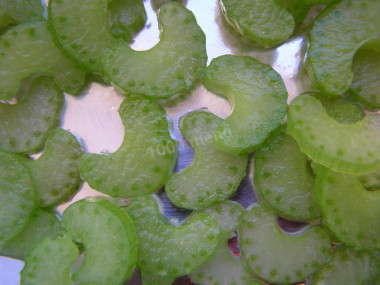
To add piquancy to the cabbage soup, and this is also one of the chips of our Russian cabbage soup, I sliced celery.
Step 8:
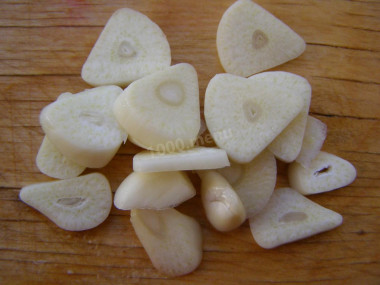
Then sliced peeled and washed garlic. It can be crushed altogether.
Step 9:
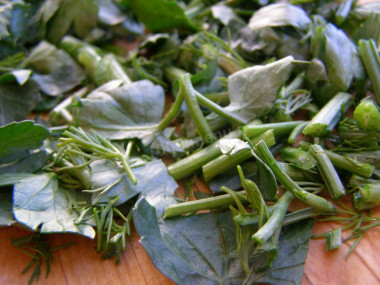
I love greens in any dish. Today's lunch was no exception. Chop a little, i.e. to taste.
Step 10:
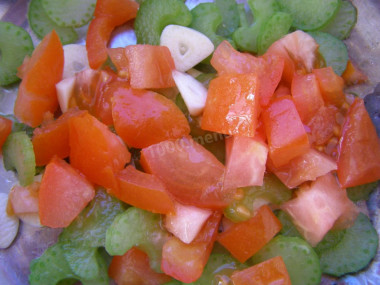
Since it was a summer version of cabbage soup, I decided to do without tomato juice or pasta. Crumbled a fresh tomato.
Step 11:
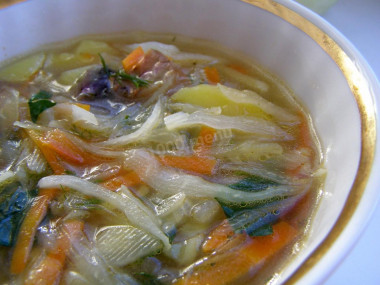
Add cabbage with strained mushrooms and a small amount (about half a cup) of mushroom broth to the half-cooked potatoes. Cook for a minute and add garlic, celery, tomato and vegetable oil, season with salt, spices and pepper (without fanaticism!). We torment this by covering the saucepan with a lid for 3-4 minutes. Then we will insist, wrapping it for 3-4 hours, and put it out in the cold for a day or 12 hours. Pour into plates and season with herbs.
And more tips
In the old days, daily cabbage soup was cooked in earthenware. They put it in the oven. Our ovens have been replaced by ovens. Therefore, we heat it to 150 degrees, simmer the soup after boiling at 120 degrees for 2.5 hours. Although in our conditions it is possible to cook in a saucepan or in a cauldron on the stove, and then, if desired, after being tired in the oven.
Daily cabbage soup is cooked on meat (mainly beef), and on fresh mushrooms, and vegetable broths. That is, at your choice.
Cabbage soup can be filled with any cereal by cooking it in advance or by boiling it in the process of cooking cabbage soup daily.
The number of vegetables and the vegetables themselves can be varied – put one or the other, less or more, i.e. adjust the density of the dish at will.
You can take any cabbage for daily vegetables & ndash; fresh, sauerkraut or both types in a set.
Caloric content of the products possible in the composition of the dish
- Onion - 41 kcal/100g
- Ripe potatoes - 80 kcal/100g
- Baked potatoes - 70 kcal/100g
- Mashed potatoes - 380 kcal/100g
- Boiled potatoes - 82 kcal/100g
- Potatoes in uniform - 74 kcal/100g
- Fried potatoes - 192 kcal/100g
- Green cabbage - 46 kcal/100g
- Fresh frozen green cabbage in a package - 45 kcal/100g
- Tomatoes - 23 kcal/100g
- Carrots - 33 kcal/100g
- Dried carrots - 275 kcal/100g
- Boiled carrots - 25 kcal/100g
- Garlic - 143 kcal/100g
- Ground black pepper - 255 kcal/100g
- Vegetable oil - 873 kcal/100g
- Dried porcini mushrooms - 286 kcal/100g
- Dried chanterelles - 261 kcal/100g
- Dried blueberries - 231 kcal/100g
- Dried aspen - 315 kcal/100g
- Dried Shiitake - 331 kcal/100g
- Sauerkraut - 19 kcal/100g
- Salt - 0 kcal/100g
- Spices dry - 240 kcal/100g
- Fresh frozen soup greens in a package - 41 kcal/100g
- Greenery - 41 kcal/100g
- Celery stalk - 12 kcal/100g

